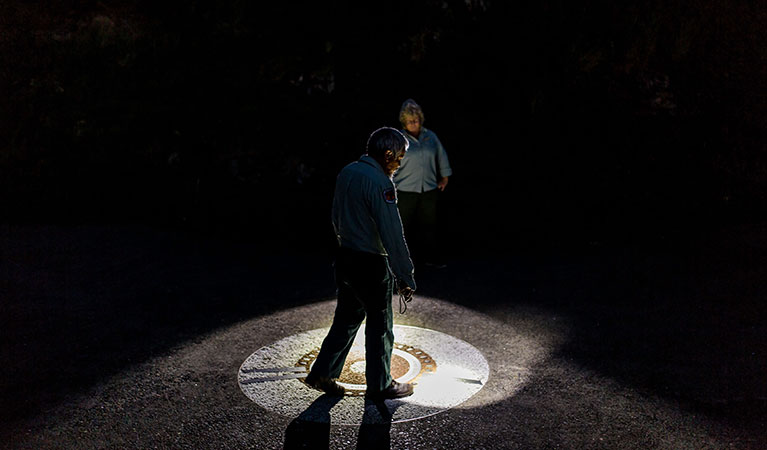School excursion
Muttonbirds by moonlight
Muttonbird Island Nature Reserve
Open, check current alerts
Overview
Muttonbirds by Moonlight is an Ecosystems at risk school excursion on Muttonbird Island, a nesting rookery for wedgetail shearwaters, for Stage 6 (Years 11-12) students focusing on Geography.
Read more about Muttonbirds by moonlight
This field trip is designed to complement a case study of a particular ecosystem at risk. It provides an opportunity to observe Muttonbird Island and its nesting rookery for thousands of wedge-tailed shearwaters.
Students can explore the geographical location and extent, and the effects on it of biophysical interactions, human impacts, and contemporary management practices.
It also provides an opportunity to question a representative of the management authority about the Cultural and global significance of the site, possible future impacts, and strategies for managing these.
For program outline, safety and practical information about this excursion, see info for teachers
| Stage | Stage 6 (Years 11-12) |
|---|---|
| Learning area | Geography |
| Student outcomes |
GE-11-01. Examines places, environments and natural and human phenomena, for their characteristics, spatial patterns, interactions and changes over time GE-11-02. Explains geographical processes and influences, at a range of scales, that form and transform places and environments GE-11-03. Explains geographical opportunities and challenges, and varying perspectives and responses GE-11-04. Assesses responses and management strategies, at a range of scales, for sustainability GE-12-02. Analyses geographical processes and influences, at a range of scales, that form and transform places and environments GE-12-03. Assesses geographical opportunities and challenges, and the role of varying perspectives and responses in their management GE-12-04. Evaluates responses and management strategies, at a range of scales, for sustainability |
| Objectives |
Students will:
|
Excursion details
- When
By arrangement. Only available between August and April when the shearwaters are present on the island.
- Duration
- 2hrs
- Grading
- Medium
- Price
-
$290 per group (includes GST). Maximum 20 students per group. For groups over 20 conditions apply.
- Accessibility
- Medium
- Booking
- If you would like to organise a NPWS school excursion please get in touch with local staff or use the 'Enquire' link for the online form.
Local alerts
For the latest updates on fires, closures and other alerts in this area, see https://www.nationalparks.nsw.gov.au/education/stage-6-geography-muttonbirds-by-moonlight-muttonbird-island-nature-reserve/local-alerts
Operated by
- School excursion inquiries - North Coast
- 02 6657 5935
- npws.northcoasteducation@environment.nsw.gov.au
Park info
- in Muttonbird Island Nature Reserve in the North Coast region
Muttonbird Island Nature Reserve is always open but may have to close at times due to poor weather or fire danger.
Info for teachers
All the practical information you need to know about Muttonbirds by moonlight.
What to bring
Please wear fully enclosed shoes and bring a hat, sunscreen, wet weather gear, and lunch which should be low waste with a refillable water bottle. Students should bring gear in a backpack or similar (not plastic bags).
Maps and downloads
Risk assessment and risk benefits
Our rangers and guides have the technical skill and experience to assess the risks and the benefits of a variety of activities delivered as part of our learning programs.
We believe in including opportunities that allow students to learn and experience for themselves through exploration in the natural environment.
Please make your own risk assessment based on the information provided. Detailed potential risks and controls are provided for the site to assist teachers in risk management planning. Teachers and carers should be aware of, and consider the needs, abilities and medical conditions of students when visiting this site. The supervision of students remains the responsibility of the teacher. The school must ensure an adequate number of adult supervisors are present.
Accessibility
Disability access level - medium
Paved pathway with some steep sections not suitable for wheelchairs. Please let us know in advance if you are bringing someone with special needs so that we can plan accordingly.

